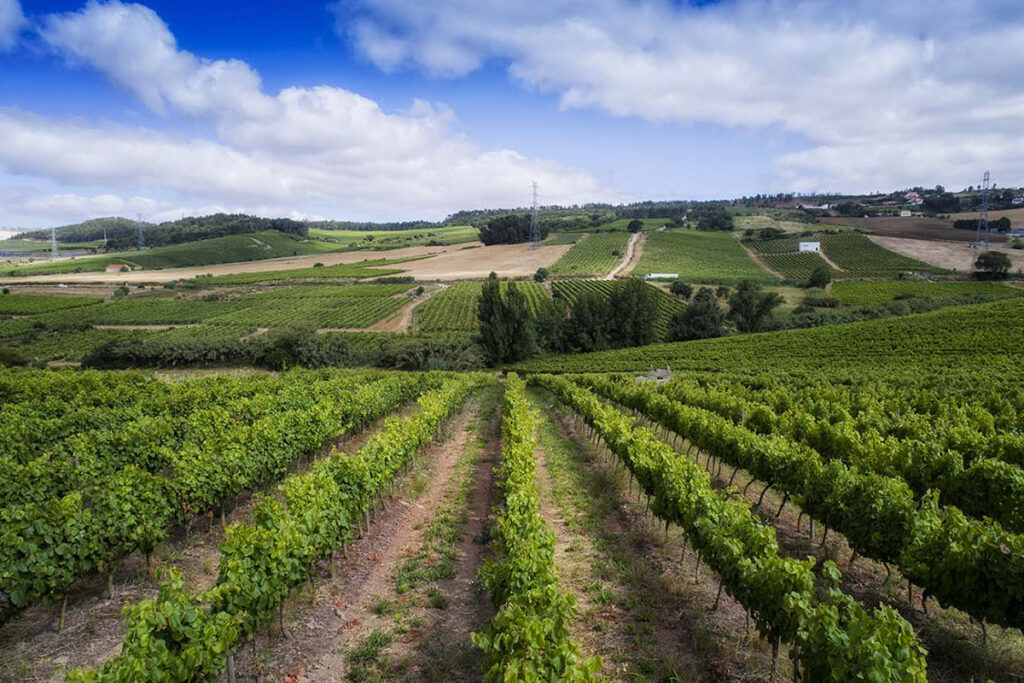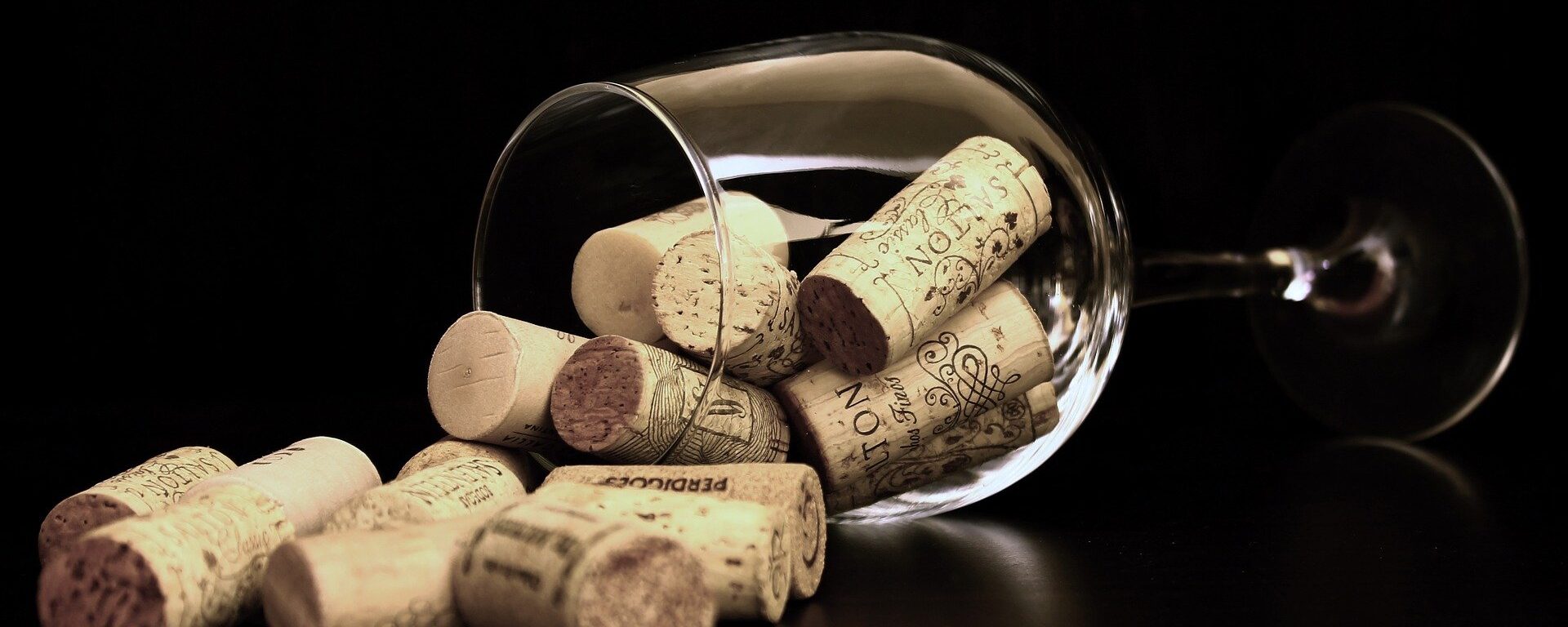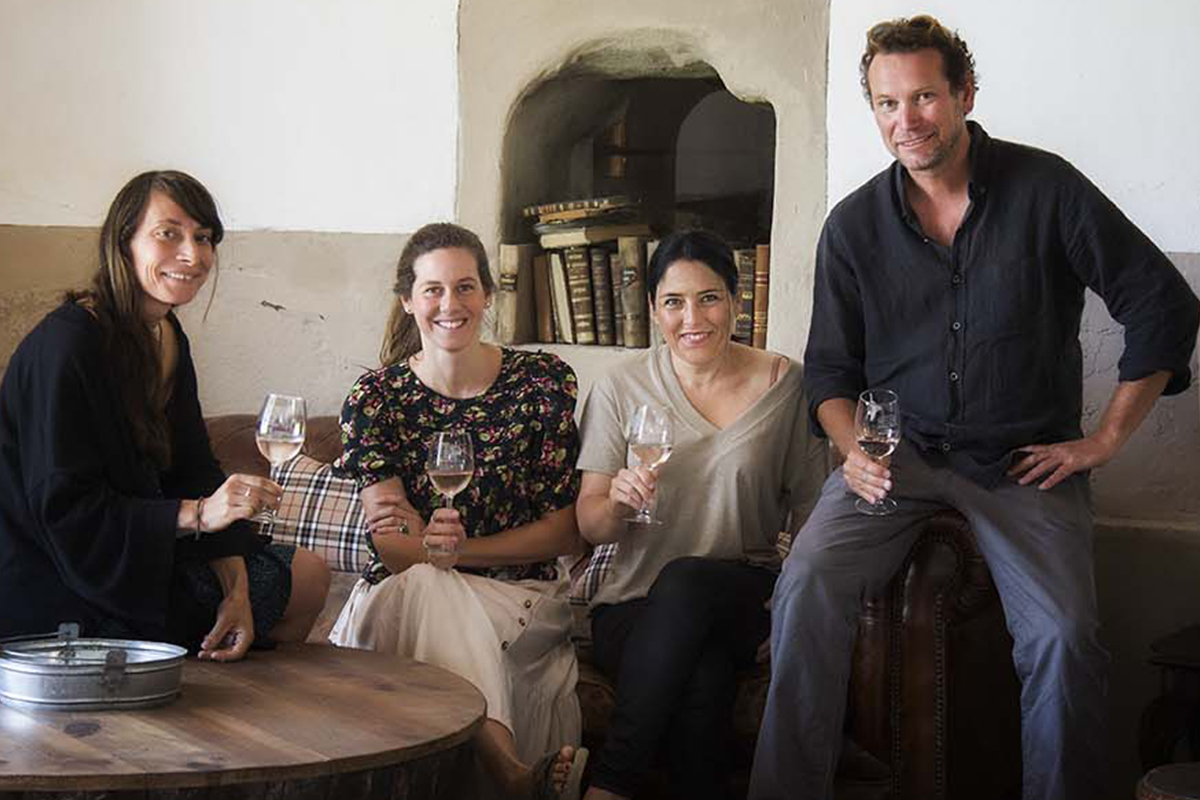At Quinta da Boa Esperança, the experimentation and production of wines in small volumes are an option, even if it means stretching the number of references in the portfolio. After all, the variety found on the various slopes, expositions, nuance of the soils and varieties compels this.
It was called Antigo Casal do João Dias, until, in 2014, Artur Gama and Eva Moura Guedes acquired the property. Here in Zibreira, in a valley of slopes, the vineyard is a constant wherever you look. It combines proximity to the Atlantic, which is less than 20 km away, with Montejunto to the northeast, so that the vineyards, on slopes with a sunny exposure, take advantage of the sun’s rays that caress them all day long.
The thermal amplitude between May and September contributes greatly to the good formation of aromas and balance between acidity and sugar. The humidity does not allow to relax or neglect the vigilance. In the clay-calcareous soils runs a water table that comes from Torres Vedras and already on the surface there are traces of algae that, together, act on the profile of the wines.
In the 11.5 hectares there are a dozen varieties of which thirteen references are made. It is part of a biological vineyard of Touriga Nacional still in an experimental regime. Here the environmental awareness is practiced. One feels the care in the exploration and knowledge of the viticultural potential of the property, which combines the will of the owners with the knowledge of Paula Fernandes who, besides being an oenologist, has a professional and academic background in the area of viticulture and integrates the project from the first moment. She was part of the coordination of the National Catalogue of Varieties and, in 2009, her master’s thesis on the behaviour of the varieties Touriga Nacional and Syrah in different terroirs, from Minho to Baixo Alentejo won her several distinctions, among them the nomination of Best Work of the Year by the Portuguese Oenological Association, or the award from the Confraria do Dão. Also to be mentioned is the support to the project of the consultant oenologist Rodrigo Martins.
Evolution and Tuning

Quinta da Boa Esperança wines are made up of the harvest range (white, rosé and red), selected red harvest, six single varietals, of which three are white (Arinto, Fernão Pires and Sauvignon Blanc) and three are red (Syrah, Touriga Nacional, Alicante Bouschet), as well as three reserve wines (rosé, white and red). This diversity is the real puzzle of the winery’s daily life. “Like a game of Tetris”, says with grace Paula Fernandes.
The solution is the construction, in progress, of a small complex that centralizes the winemaking, aging of wines and offices. This way it frees the small buildings, of historical architecture, for wine tourism and other activities, which today support the winemaking and aging. As the will of the team is to “make pedagogical wines, show the varieties and experiment”, as Artur says, the installations must respond to this will. At this moment it produces about 70 thousand bottles, but with potential for 150 thousand.
The wine tasting shows the natural evolution and fine-tuning in the design and profile, well perceptible when going through the few harvests made. The white wines are very faithful to the “Lisbon” style, with their acid freshness and salinity. However, they reveal increasing sophistication in the aromatic definition and nothing exuberant. The care with origin in the individuality of the parcels, the grape varieties, the harvest in the right times, the minutiae and the focus on the procedures at the entrance of the winery, such as the pressing and crushing regimes, make themselves felt in the general primordium and precision. Excellent in structure and balance, combining volume with high acidity and quality.
As an example, the Quinta da Boa Esperança Fernão Pires 2017, the reference of largest production (35 thousand bottles), which reveals ripe fruit and some honey, suggestions of kerosene in contrast with strong saline impression and vibrant acidity. The 2018 is more focused and precise, because freshness and sobriety reign in a very sophisticated whole. Beautiful the Arinto of 2018, of remarkable structure and very serious. Perhaps the best and most distinguished white of Quinta da Boa Esperança!
The Colheita range presents a lot of quality and ambition, showing to be a great standard-bearer of the project. The red wines confirm the Lisbon region as a producer of “matured” reds but of incredible freshness.
Colheita Seleccionada 2015 is a true “sommelier wine”. The Alicante Bouschet, which for the owners and winemaker had everything not to be happy there, surprises and contradicts the forecasts, by manifesting itself in strength and elegance in the 2017 edition. The impetus of experimentation, combined with the management of the operational, led to the emergence of a Reserve Rosé of 2018. Peripécia that counts in a fast way. In order not to leave a 500 liter barrel empty, this one was filled with Touriga Nacional rosé, resulting original, different and curious, which is worth to be replicated in the future.
These are wines that, explicitly, brighten up moments at the table. In the English capital they are present in more than 30 restaurants, through Tim McLaughlin-Green, founder of sommelierschoice.co.uk, in which Quinta da Boa Esperança has an enthusiastic partner and ambassador. Export already represents more than 60% of the business, with wines present in ten countries. In the national market, the focus is on the Horeca channel and they appear in some reference restaurants in the capital.
The wine tourism started spontaneously, receiving visits and giving the wines to the tasting and naturally had to be approached in a structured way. “We want it to be a familiar and intimate wine tourism”, underlines Artur Gama. Visits, tasting and meals are part of the offer. There are four tasting packages that go through the wine ranges and four meal proposals harmonized with wines. Good wine, friendliness, charm, all very close to Lisbon.

